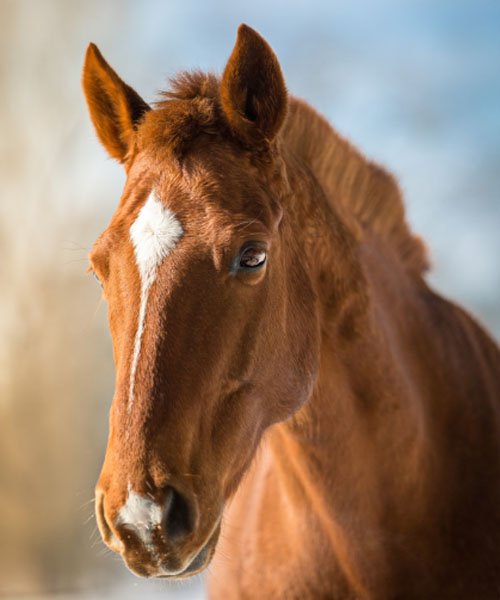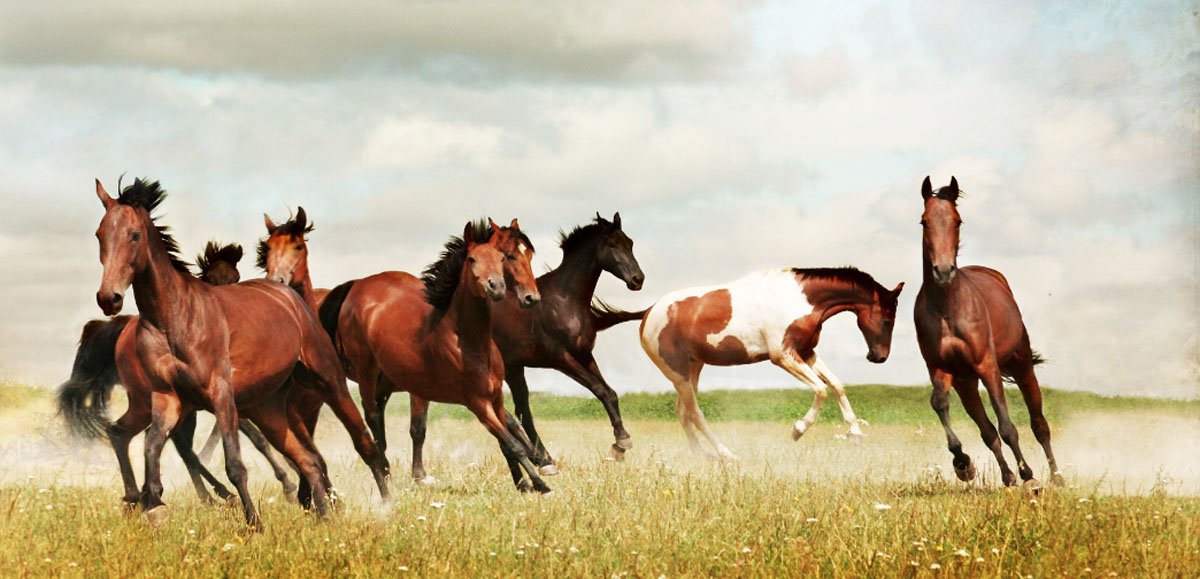Different species communicate with each other for various reasons and purposes. Horses, being social animals, also communicate with each other through vocalizations and body language. Understanding horse body language is crucial for horse trainers, riders, and anyone interacting with these animals. Continuous learning about horse body language and behavior is essential for better communication with you equine partners.

If you are a horse trainer or owner and want to interact safely and happily with your equine companion, understanding horse body language is very necessary.
Horses will tell you their current state and feelings through their body language. Being large and powerful animals, understanding horse body language can prevent misunderstandings and unnecessary harm to both humans and horses. Recognizing normal horse behavior allows us to detect abnormalities timely and discover that it may be sick, so that we can provide timely treatment. Understanding their temperament and different reactions enables riders and trainers to interact more effectively.
Horses typically express their emotions and intentions through facial expressions, body movements, and vocalizations.
Horses use their ears, eyes, muzzle to express emotions, and these facial expressions play an important role in horse socialization.
We often see horses shaking their ears, widening their eyes, or clenching their mouths. Do you know what these mean?
Ears forward: Usually means your horse is listening carefully, alert and interested in what is going on around him.
However, if a horse's ears are tilted forward with its nostrils flaring, this is a sign that the horse is fearful.
Ears Backward: Indicates they are listening to sounds behind them (or to the rider).
Ears on both sides: Indicates sleeping or relaxing. Horses in this state are easily startled, so don’t disturb them easily.
You can softly call their name and don’t get close until they notice you.
Rapid rotation: It means that it is anxious, in a state of high alert, and is looking for the source of its uneasiness.
Ears flat against the neck: Indicates your horse is angry and aggressive.
Relaxed, droopy: This means your horse is relaxed or sleeping, please do not disturb it.
Rapid rotation: Indicates discomfort and a desire to flee.
Showing the whites of its eyes: means it is scared and nervous, please do not stimulate it. (Except for horse breeds prone to showing whites of the eyes).
Muscle contraction around the eyes: Indicates your horse is in pain or discomfort.
Half-closed: If your horse's eyes are half-closed for an abnormal duration, it indicates there might be something in its eye or causing discomfort, please deal with it in time.

Relaxed, drooping lips: Indicates your horse is relaxing. Please do not disturb it. Once it gets up and starts to move, its lips will return to normal. Otherwise, there is a problem. Please contact the veterinarian in time.
Tightly closed mouth: If your horse has a clenched muzzle, it means he is fearful, nervous, or under stress. Please help him to ease his feelings so that he doesn't do something hurtful.
Chewing: When your horse is chewing without eating, it means it is thinking.
Upper lip curled: If your horse raises its head, curls up its upper lip, and inhales and exhales, it means it smells an unfamiliar scent. This behavior is called the flehmen response, which is common during courtship.
Nostrils flaring: Horses usually flare their nostrils during exercise to take in more air, but they also do it when scared.
Teeth rattling: This behavior usually occurs in foals where they clench their teeth and make a rattling sound to indicate that they are just a baby and cannot be harmed.
Opening his mouth and showing his teeth: If your horse does this along with his ears pricking up, it means it is angry and may bite in the next second. If it happens while riding, check if the harness is causing the pain. If it opens its mouth and stretches its neck while eating, check to see if there is any food obstruction that could cause suffocation.
Lowered head: If your horse lowers its head, it means it is relaxed or sleeping. Be careful not to disturb it.
Raised head: When your horse raises its head, it indicates it's observing the distant situation, in an alert state. You need to slowly guide it to return its attention to you.
Swinging back and forth: If the horse's head swings back and forth, please note that it may be in an offensive state. Please figure out the reason for this situation and resolve it promptly.
Spread apart: If your horse's front legs are spread apart, it indicates it's scared. If it often spreads its front legs, please contact the veterinarian in time.
Pawing: When it is bored, it will scratch the ground with its front legs. If it scratches the ground hard and raises its ears, it means it is angry and about to attack. Please keep a distance.
Stamping: When your horse lifts its legs hard and puts them down, it might indicate flies or insects bothering it. Please address the issue promptly.
Front kick: This is a signal to attack or defend, keep a distance!
Raised: If it lifts one leg, with the front edge of the hoof touching the ground and lowering its buttocks, it means it is relaxing at the moment. However, if it quickly switches to the other leg to support its weight, it means it may feel pain. Please contact us in time. veterinary.
Lifting: If your horse lifts its legs and puts its ears back flat against its neck, it means it may be annoyed by flies and other insects, or it may be ready to kick!
Flapping: If it is a slight flapping of the tail, then it is driving away flies. If the tail is flicking rapidly, you should pay attention. This means that your horse is very angry and possibly preparing to kick. If it often wag its tail during riding, you should pay attention to whether the saddle is inappropriate and causing damage to it.
Clamping: If your horse is clamping his tail, it is nervous. If you find that it has its tail clamped during riding, please check whether the harness is installed correctly.
Raised: If your horse raises its tail high, it indicates excitement and energy.
Stiff: If you feel your horse's muscles or movements are stiff, it might feel nervous and scared. Please stay calm and quiet to calm its emotions.
Trembling: If your horse is trembling, it may mean that it is fearful or has been abused in the past. Please be patient and help him resolve the problem.Touch: If your horse wants to eat or is curious about you, it might nudge you with its head or mouth.
Touch: If your horse wants to eat or is curious about you, he will nudge you with his head or mouth.

Whinny: Horses whinny to locate their companions. A mare uses a soft, low hiss to find her foal.
Snort: If your horse snorts loudly, it's signaling potential threats to its companions. It might also express excitement and comfort during work or action.
Scream: A horse's scream is a warning signal.
Nicker: This sound is made by the horse's vocal cords after its mouth is closed, and is usually a greeting.
Combining the above content, it is not difficult for us to summarize what kind of body language your horse partner uses to express its emotions.
Happy: Horses stand in a relaxed posture, with ears up, eyes relaxed, and mouth not tense.
Anger: When your horse's ears are tilted back, he is expressing anger. If there is still a threat, it will flatten its ears to its neck, clamp its tail, open its mouth, expose its teeth and the whites of its eyes, raise its hind legs, and prepare to kick and attack.
Fear: The muscles all over the body are stiff and tense, the tail is clamped or twisted, the mouth is closed, and the whites of the eyes may be exposed.
The relationship between horses and humans has a history of thousands of years. Around 3500 BC, humans domesticated horses, and horses played an important role in transportation and agriculture. During the Middle Ages, horses were used in warfare and became part of military strategy. During the Industrial Revolution and World War I, horses were still used for cavalry charges, transportation, and logistical support. Over time, the role of horses changed into a partner in sports and entertainment. The equestrian events like show jumping and dressage have become the international competitions.
Today, humans and horses still live in friendly cooperation and will leave a profound mark on human history.
Horses are very perceptive animals, and inadvertent human behavior can cause horses to panic.
1. Sudden noises and movements, or intrusions from the blind area of their field of vision will frighten them and cause them to react in fear.
2. The veterinary treatment and examination of the horse, as well as the trimming of the horse's hooves and body hair, will make the horse feel disgusted, threatened and in pain.
3. Unfamiliar smells such as pesticides can also make horses feel confused, unfamiliar and nervous.

Establishing a good relationship with your horse is based on mutual respect and effective communication. Here are some methods to foster a friendly relationship between humans and horses:
1. Learn to understand horse body language to avoid putting them in fearful or tense states.
2. Have enough time and patience when working with horses, and have clear and consistent commands for your horses when leading them in exercises.
3. Interact with your horse gently to build trust. Give more snacks, praise and other positive incentives.
4. Engage in activities your horse enjoys to cultivate a cooperative relationship.
To establish a long-term good partnership with horses, you can continually learn about them through:
1. Reading books about horses, such as "horse speak: an equine-human translation guide: conversations with horses in their language" by Sharon Wilsie or "True Horsemanship Through Feel" by Bill Dorrance and Leslie Desmond.
2. Learning from websites and blogs about horse care and training.
3. Joining relevant forums, attending relevant seminars, and listening to relevant remarks from professionals.
In summary, understanding horse body language is crucial to fostering a happy partnership between human and horse. Horses express their emotions and feelings through rich facial expressions and body language, and we need to actively respond to this and take appropriate measures.